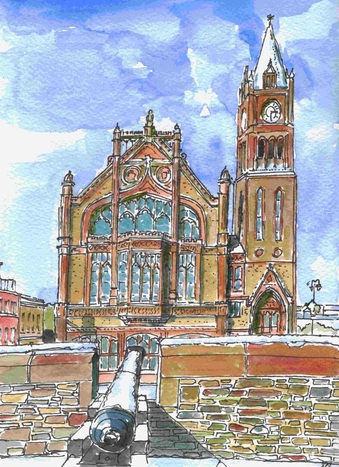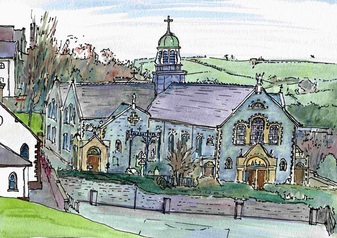Home Rule
|
The Guildhall reopened in 1912 after a devastating fire with a new main façade facing the city walls decorated in the Perpendicular Gothic Style. To the rear, facing the river, Venetian Gothic was employed. When first opened, stone details and stained glass concentrated on the Post- Plantation glories of the city and in particular on the links to London. The building was used as an appropriate venue for those signing the Solemn League and Covenant against Home Rule for Ireland in the same year.
Also in 1912 the Roman Catholic Long Tower Church reopened after major works. This had Hiberno-Romanesque details and many references to the medieval glories of the city. |
|



